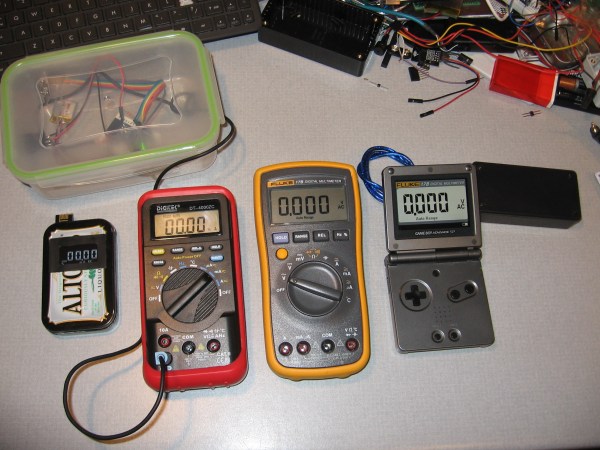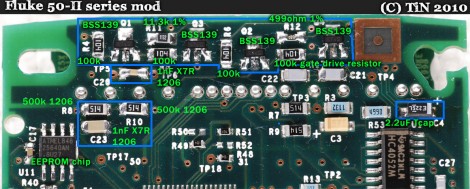Multimeters are one of the key tools in a hardware hacker’s bench. For 90% of us, the meter leads are perfect for making measurements and looking over at the results. Sometimes you need a bit more distance though, and for that, [Ken Kaarvik] has created the Multimeter remote display. Remote displays are pretty handy when you want to measure something several feet away from your bench. They’re also great if you need to check something in an enclosed space, like a server rack or a refrigerator. Fluke actually sells multimeters with wireless displays, such as their model 233.
The key to this project is the FS9721 LP3 chip by Fortune Semiconductor. (PDF link) The FS9721 is essentially a system on chip (SOC) for multimeters. It contains a digital to analog to digital converter, an LCD driver, and a microcontroller. It also can send data out over a 2400 baud serial link. Two of [Ken’s] multimeters, the Digitek DT-4000ZC and a Fluke 17B, both have this chip. The Digitek has a 1/8″ plug for connecting to the outside world, while the Fluke requires some simple hardware mods to enable data output.
Since this was his entry for the Trinket EDC contest, [Ken] connected the serial output of the FS9721 to an Adafruit Pro Trinket. The Trinket formats the data and sends it to an nRF24L01+ 2.4GHz radio module. The receiving end has an identical radio, and another Pro Trinket. [Ken] actually built two wireless displays. One is a dual-boot Game Boy advance which has a really slick background on the color display. The other receiver utilizes a 128×64 OLED. The trinket, nRF24L01+ and display all fit neatly inside an Altoids tin.
Click past the break to see both wireless remote displays in action!
Continue reading “Give Your Multimeter A Wireless Remote Display”



 [Tom] told us that the team is currently redesigning their hardware. The next generation prototype board with more protection can be seen in the far right of the top photo. He also mentioned that they’re shooting for 5 digits of accuracy, placing them on par with many bench scopes. We’re skeptical to say the least about 5 digits, but the team is definitely putting their all into this product. We’ll wait until the Kickstarter backers start getting their final devices to see if Voltset is everything it’s cracked up to be.
[Tom] told us that the team is currently redesigning their hardware. The next generation prototype board with more protection can be seen in the far right of the top photo. He also mentioned that they’re shooting for 5 digits of accuracy, placing them on par with many bench scopes. We’re skeptical to say the least about 5 digits, but the team is definitely putting their all into this product. We’ll wait until the Kickstarter backers start getting their final devices to see if Voltset is everything it’s cracked up to be.













